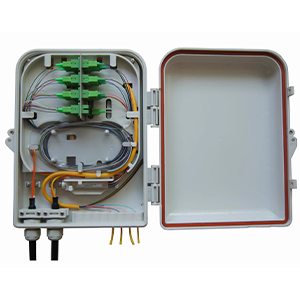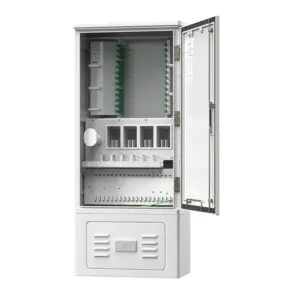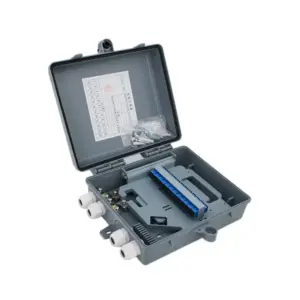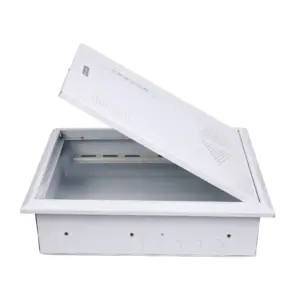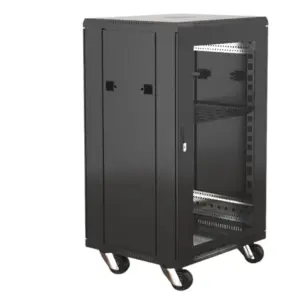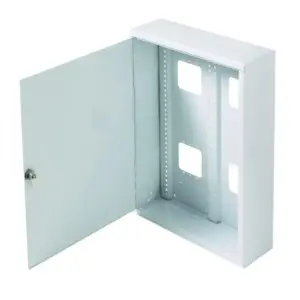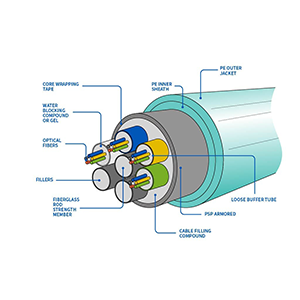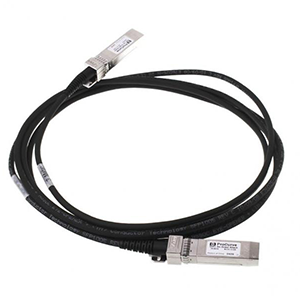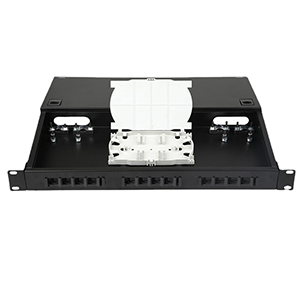Terminal boxes in fiber optic networks undoubtedly play an important role. This article will explore the purpose of fiber optic terminal boxes and their application scenarios. We will first define the physical structure and function of fiber optic terminal boxes and explain their key role in fiber optic networks. Next, we will list common types of terminal boxes, such as wall-mounted and rack-mounted, and analyze the characteristics and applicable scenarios of various types of terminal boxes.
We will explain the role of fiber optic terminal boxes in connecting and protecting optical fibers, and introduce their importance in optical path distribution and management. In addition, we will analyze the key parameters that affect the performance of terminal boxes, such as the number of ports and density, and discuss how to choose a suitable terminal box based on actual needs. Finally, we will introduce typical application cases of terminal boxes in different scenarios and explain their role in network construction and maintenance.

Overview of fiber optic terminal boxes
Let me introduce you to the basic concepts of fiber optic terminal boxes and their key role in fiber optic networks.
The physical structure and functions of the fiber optic terminal box:
(1) Physical structure:
- The fiber optic terminal box is a device used for fiber optic network deployment.
- It uses a metal or plastic shell to protect the internal fiber optic connectors and management components.
- The terminal box usually integrates functional modules such as fiber optic import and export, splicing box, and fiber core management.
(2) Core functions:
- The main function of the fiber optic terminal box is to centrally manage and protect fiber optic connectors.
- It can realize operations such as input, branching, splicing and connection of optical fiber cables.
- It also provides functions such as fiber storage, fixation and bending radius control.
The key role of the fiber terminal box in the fiber optic network:
(1) Centralized management of fiber resources:
- The fiber terminal box can centralize the scattered fiber optic cables in one place for unified management.
- It is conducive to improving the efficiency of fiber optic deployment and maintenance and reducing operation and maintenance costs.
(2) Protecting fiber optic connectors:
- The terminal box can protect the fiber optic connectors from the influence and damage of external environmental factors.
- Ensure the stability and reliability of the fiber optic connection points and improve the overall performance of the network.
(3) Realizing flexible wiring:
- The integrated fusion box and management components in the terminal box can support the rapid deployment of fiber optic cables.
- It is conducive to adapting to the fiber optic network deployment needs of different scenarios and improving the adaptability of the system.
(4) Easy maintenance and upgrade:
- The terminal box provides a centralized access point, simplifying the maintenance and upgrade of the fiber optic network.
- By operating the terminal box, network faults can be quickly located and resolved.
In short, the fiber optic terminal box plays an indispensable role in the deployment and operation of the fiber optic network. It centrally manages fiber resources, protects key joints, and provides flexible wiring and convenient maintenance. It is an indispensable key device for building a reliable fiber optic network.
Main types of fiber optic terminal boxes
Let me introduce you to the main types of fiber optic terminal boxes, as well as the characteristics and applicable scenarios of various types of terminal boxes.
Common types of fiber optic terminal boxes:
(1) Wall-mounted terminal box:
- It adopts a wall-mounted structural design and is commonly used in homes and small businesses.
- The external dimensions are small and can only accommodate a small number of fiber connectors and cables.
(2) Rack-mounted terminal box:
- Can be installed on a 19-inch standard cabinet, suitable for large data centers and computer rooms.
- Large volume, can accommodate multiple fiber optic inlets and outlets and rich management functions.
(3) Underground terminal box:
- Installed on the ground or underground, commonly used for fiber optic network deployment in outdoor environments.
- With waterproof and dustproof protection, suitable for harsh environmental conditions.
(4) Outdoor wall-mounted terminal box:
- Adopts a waterproof and dustproof metal shell and can be directly installed on an outdoor wall.
- It has both computer room-level protection performance and convenient installation.
(5) Modular terminal box:
- Adopting modular design, various functional modules can be freely configured according to needs.
- High flexibility, suitable for fiber optic networks of different scales and complexities.
Features and applicable scenarios of various terminal boxes:
(1) Wall-mounted:
- Small size, simple installation, suitable for home and small business application scenarios.
- The number of fiber optic access points is limited, not suitable for large-scale network deployment.
(2) Rack-mounted:
- High integration, strong management function, suitable for large computer rooms and data centers.
- Can carry a large number of fiber optic cables to meet the needs of high-density deployment.
(3) Underground:
- Excellent protection performance, suitable for deployment in harsh environments such as outdoor and underground.
- Suitable for access aggregation scenarios of trunk or trunk-branch fiber networks.
(4) Outdoor wall-mounted:
- Combining protection and installation convenience, suitable for fiber networks in outdoor environments.
- Can replace some underground terminal boxes, with more flexible application scenarios.
(5) Modular:
- Supports customized configuration, suitable for fiber networks of various sizes and complexities.
- Can be flexibly expanded according to actual needs, very suitable for future network evolution.
In short, different types of fiber optic terminal boxes have different focuses in terms of physical characteristics, functional characteristics and applicable scenarios, and need to be selected according to actual application requirements.
Core functions of fiber optic terminal boxes
Let me introduce you to the core functions of fiber optic terminal boxes in detail, including the splicing and protection of optical fibers, as well as their importance in optical path distribution and management.
Fiber optic splicing and protection:
(1) Fiber optic splicing:
- Fiber optic terminal boxes provide functions such as input, branching and splicing of optical fiber cables.
- Through the connectors and splicing boxes in the terminal box, optical fibers can be quickly connected and repaired.
(2) Fiber optic protection:
- The outer shell of the terminal box can protect the internal fiber optic connectors from damage by the external environment.
- Including dustproof, moisture-proof, earthquake-resistant and other types of protection to ensure the reliability of optical fiber connection.
(3) Performance management:
- The terminal box is integrated with monitoring modules such as optical power and reflection loss.
- The performance of optical fiber transmission can be monitored and managed in real time.
Optical path allocation and management:
(1) Optical path allocation:
- The terminal box is equipped with optical fiber inlet and outlet ports to realize the branching and convergence of optical paths.
- Supports the rapid access and allocation of optical fiber cables, improving the flexibility of network deployment.
(2) Fiber management:
- The terminal box is equipped with special optical fiber storage and fixing components, such as fusion boxes and cable ducts.
- It can effectively organize and manage optical fiber cables to avoid entanglement and small bending radius.
(3) Maintenance convenience:
- The terminal box provides a centralized optical fiber access port, which simplifies network maintenance and upgrades.
- By operating the terminal box, optical fiber network faults can be quickly located and resolved.
In short, as a key device in the deployment of optical fiber networks, the optical fiber terminal box plays an important role in optical fiber splicing protection, optical path distribution management, etc. It ensures the reliability and flexibility of the optical fiber network and provides a strong guarantee for the stable operation of the entire system.
Key performance indicators of optical fiber terminal boxes
Let me analyze in detail the key parameters that affect the performance of optical fiber terminal boxes, and how to choose a suitable terminal box according to actual needs.
Key performance indicators of fiber optic terminal boxes:
(1) Number of ports:
- The number of fiber optic inlet and outlet ports of the terminal box determines its service capacity.
- The more ports there are, the more fiber optic cables and users can be carried.
(2) Port density:
- This reflects the number of fiber optic ports integrated in a limited space.
- High port density means higher integration and space utilization of the terminal box.
(3) Management function:
- Whether the terminal box is integrated with functional modules such as optical power monitoring and optical path management.
- This determines the terminal box’s ability in network operation and maintenance.
(4) Environmental adaptability:
- The terminal box’s waterproof, dustproof, shockproof and other protection performance is critical.
- Different application scenarios have different requirements for environmental adaptability.
(5) Usability:
- The terminal box’s appearance size, installation method, and ease of operation.
- Directly affects the actual use experience of the terminal box.
Choose a suitable terminal box according to needs:
(1) Determine the application scenario:
- Determine whether the terminal box is used in different scenarios such as home, enterprise, and data center.
- Determine the core performance indicators of the terminal box according to the scenario requirements.
(2) Evaluate the user scale:
- Estimate the number of user accesses and the growth trend in a certain period of time in the future.
- Select a terminal box with the number and density of ports that can meet the needs.
(3) Understand the environmental conditions:
- Evaluate the environment in which the terminal box is located, such as whether it needs waterproof and dustproof features.
- Select a terminal box model with suitable environmental adaptability.
(4) Consider functional requirements:
- If optical power monitoring, intelligent management and other functional support are required.
- Select a terminal box with integrated relevant functional modules.
(5) Weighing the cost-effectiveness:
- On the premise of meeting the above requirements, choose a terminal box with a higher cost-effectiveness.
- Take into account both the initial investment cost and the long-term operating cost.
In short, choosing a suitable fiber terminal box based on the actual application scenario, user scale, environmental conditions and functional requirements is the key to ensuring the stable and efficient operation of the entire fiber network.
How to deploy and apply fiber terminal boxes
Let me introduce you in detail the typical deployment scenarios of fiber terminal boxes in actual applications, as well as their important role in network construction and maintenance.
Typical application cases of fiber terminal boxes in different scenarios:
(1) Home/small business applications:
- Use a wall-mounted fiber terminal box and install it in the user’s home or small office.
- Through the terminal box, the fiber access cables are centrally managed and distributed.
(2) Medium and large enterprise applications:
- Use a rack-mounted fiber terminal box, installed in the network room or data center.
- The terminal box can manage a large number of fiber cables and provide enterprises with high-speed and reliable intranet services.
(3) Outdoor metropolitan area network applications:
- Select underground or outdoor wall-mounted terminal boxes with excellent protection performance.
- Deployed in outdoor environments such as urban roads and telecommunication towers to achieve access to metropolitan area fiber networks.
(4) Large-scale fiber network applications:
- Use modular fiber terminal boxes to flexibly configure various functional modules.
- Applicable to large-scale fiber infrastructure such as large operator networks and smart cities.
The role of fiber optic terminal box in network construction and maintenance:
(1) Network deployment stage:
- The terminal box provides functions such as input, branching, and splicing of optical fiber cables.
- It is conducive to simplifying the rapid deployment of optical fiber networks and improving the efficiency of engineering construction.rate.
(2) Daily operation and maintenance stage:
- The terminal box concentrates the fiber access points, which is convenient for monitoring and diagnosing network conditions.
- Through the operation of the terminal box, fiber network faults can be quickly located and resolved.
(3) Future evolution stage:
- The modular terminal box can flexibly expand various functional modules according to needs.
- Support the gradual upgrade and transformation of the fiber network to adapt to future business needs.
In short, the fiber terminal box plays a key role in different application scenarios, which not only simplifies network deployment, but also improves the convenience of daily maintenance. At the same time, its flexible modular design also provides strong support for the evolution of future fiber networks. It can be said that the fiber terminal box is an important infrastructure for building a reliable and efficient fiber network.
Summary
Rational selection and correct deployment of fiber optic terminal boxes are essential for building a highly reliable fiber optic network. Our company has long been focusing on the research and development and production of optical communication equipment and its supporting products, and has rich industry experience. Our fiber optic terminal box products have reached the industry’s leading level in terms of port density and reliability, and can meet your demanding fiber optic network needs.
Whether you need to deploy in a data center, a telecommunications office room, or an outdoor environment, we can provide you with customized terminal box solutions. At the same time, our professional team will provide you with a full range of technical support, including on-site surveys, solution design, and installation and commissioning guidance. Contact us now to learn more about the fiber optic terminal box.
Termination Box FAQ
A fiber optic termination box, also known as a fiber optic splice/termination enclosure, is a protective enclosure used to house and organize the termination points of fiber optic cables.
The main function of a termination box is to provide a secure and organized location for splicing, connecting, and protecting the fiber optic cable terminations.
Termination boxes are commonly found in telecommunications infrastructure, data centers, and other fiber optic network installations, both indoors and outdoors.
Typical components include cable entry/exit ports, splice trays, fiber optic adapter panels, cable management features, and protective enclosures.
Termination boxes are specifically designed to manage the termination points of fiber optic cables, whereas other enclosures may be used for cable routing, splicing, or distribution.
Key benefits include organized cable management, protection from environmental factors, easy access to termination points, and the ability to scale as the network grows.
Installation typically involves securely mounting the box, routing the fiber optic cables, terminating the fibers, and organizing the connections within the box.
Common connector types include LC, SC, ST, and MPO/MTP, depending on the specific network requirements and termination needs.
Maintenance may involve regularly inspecting the box, cleaning fiber optic connections, and addressing any physical or performance-related issues.
Advancements include the integration of advanced features like remote monitoring, higher fiber density, and improved environmental protection.

